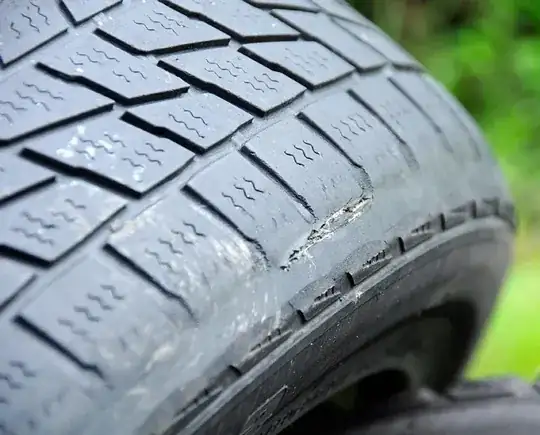Since the tire is used, having a way to check the tread depth is going to be important, and if you are buying a set of two for a single axle, make sure you can get two that have the same amount of tread so you don't put extra strain on your differential (assuming driven wheels). If you're getting one tire, try and match the remaining tread on your existing tire. Note that 2/32" is considered a totally worn tire, and many tires will start in the 12/32"-10/32" range when new.
As far as damage goes, pay attention to any repairs that have been done, and if any, make sure it was a proper repair, and not some roadside plug. Look for cuts along the tire that may not have lead to a flat, and look at both sidewalls of the tire for abrasion or damage.
Inspect the tire bead (inside edge) to make sure it's in good condition since a used tire has, by definition, been on and off of a rim. Any time the tire is put on a mounting machine is a chance for damage by an inexperienced operator.
If the tire is free of damage, we also need to see when the tire was made.

The tire should have a stamp like the one in the bottom right of this image. The tire in the image was made in the 51st week of 2007. The last for digits have been standardized, so you can rely on the date code. If the tire is older, look for signs of the rubber hardening or cracking. If the code is not present, the tire may have been made before 2000, and you don't want that anyway.




